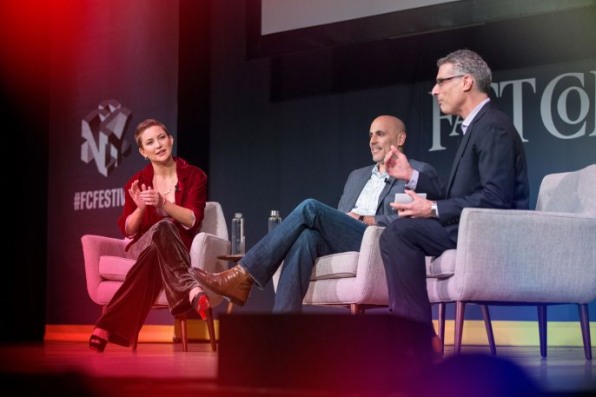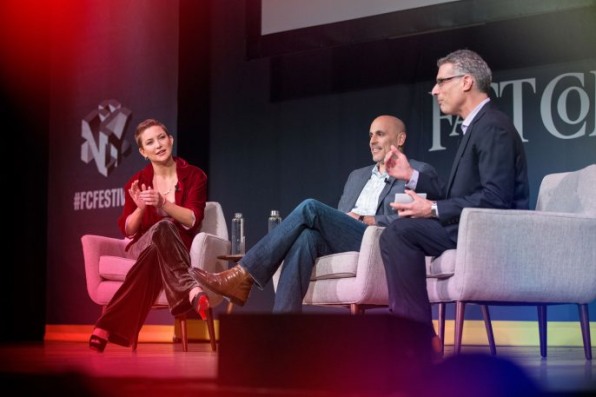
26 Oct Kate Hudson Believes In Fabletics’s Subscription Model—Even If Cher Hates It
A few weeks ago, Cher went into Fabletics, the activewear store founded by Kate Hudson. She left a less-than-happy customer. The thing about Fabletics is that it collects a lot of data about customer preferences to better tailor products and experiences to them. But to Cher, the process felt like being asked to jump through a lot of hoops. “What a pain in the ass,” she declared on Twitter. “Won’t even let you see anything till you give them your first born.”
Made mistake of going2 Fabletics.What a pain in the ass.won’t even let u see anything Till u give them ur 1st born‼️Felt I Was Being Conned
— Cher (@cher) July 18, 2016
When Hudson took the stage at the Fast Company Innovation Festival today, Cher didn’t join her. But despite the music icon’s public rebuke, Hudson held her ground, saying she believes Fabletics’s membership model is the key to its success.
“What the membership model allows us to do is really understand our customer and create brand loyalty, which is what we are finding it has created,” Hudson says.

Hudson founded the company in 2013 as an affordable activewear brand that focuses on products with fashionable prints and bright colors. The brand, which launched online, is now expanding into brick-and-mortar stores. Hudson says Fabletics will have 24 stores across the country by the end of the year, and the business now rakes in $250 million in annual revenues.
Part of that success, Hudson says, is due to the fact that it encourages customers to become members, a designation that unlocks cheaper prices and exclusive products. Fabletics collects a lot of data about customer demographics and preferences before they even make a single purchase. Then it continues to accumulate data about each individual’s shopping habits. Other brands typically only gather a smattering of information about a visitor to their site based on their cookies, and very often they only gather more data after a purchase is made.
Not Fabletics. “We have data about what every single customer is bringing into the dressing room, and what they are not,” Hudson says.

Know Your Customer
Since products are only available through the brand’s own website and stores, Fabletics can customize every touchpoint the customer experiences. And the influx of data that each member provides means it’s possible to tailor this experience to exactly what they will respond to. “All of the information we get–whether it is online or in our retail stores–we’re able to understand what our customer wants,” Hudson says. “This has created more growth for us.”
This year has been catastrophic for the retail industry, with more stores closing than during the Great Recession. But part of the reason that Fabletics has felt confident about expanding its physical footprint is because it is sitting on a trove of data about where its customers are. “We’re able to strategically place our retail stores,” Hudson says. “We know where our most loyal customers are and place our stores close to them. And connection is everything.”
Fabletics has found that customers who visit retail stores have two to three times the lifetime value compared to those who just visit the website.
For Hudson, one of the main benefits of knowing the customer is that it empowers the company to take risks they may not otherwise take, because they can take educated guesses about what might work. “We can create things and say, ‘Let’s just see what happens with this,’” she says. “Sometimes those things become our biggest sellers.”
Source: Fast Company




Sorry, the comment form is closed at this time.